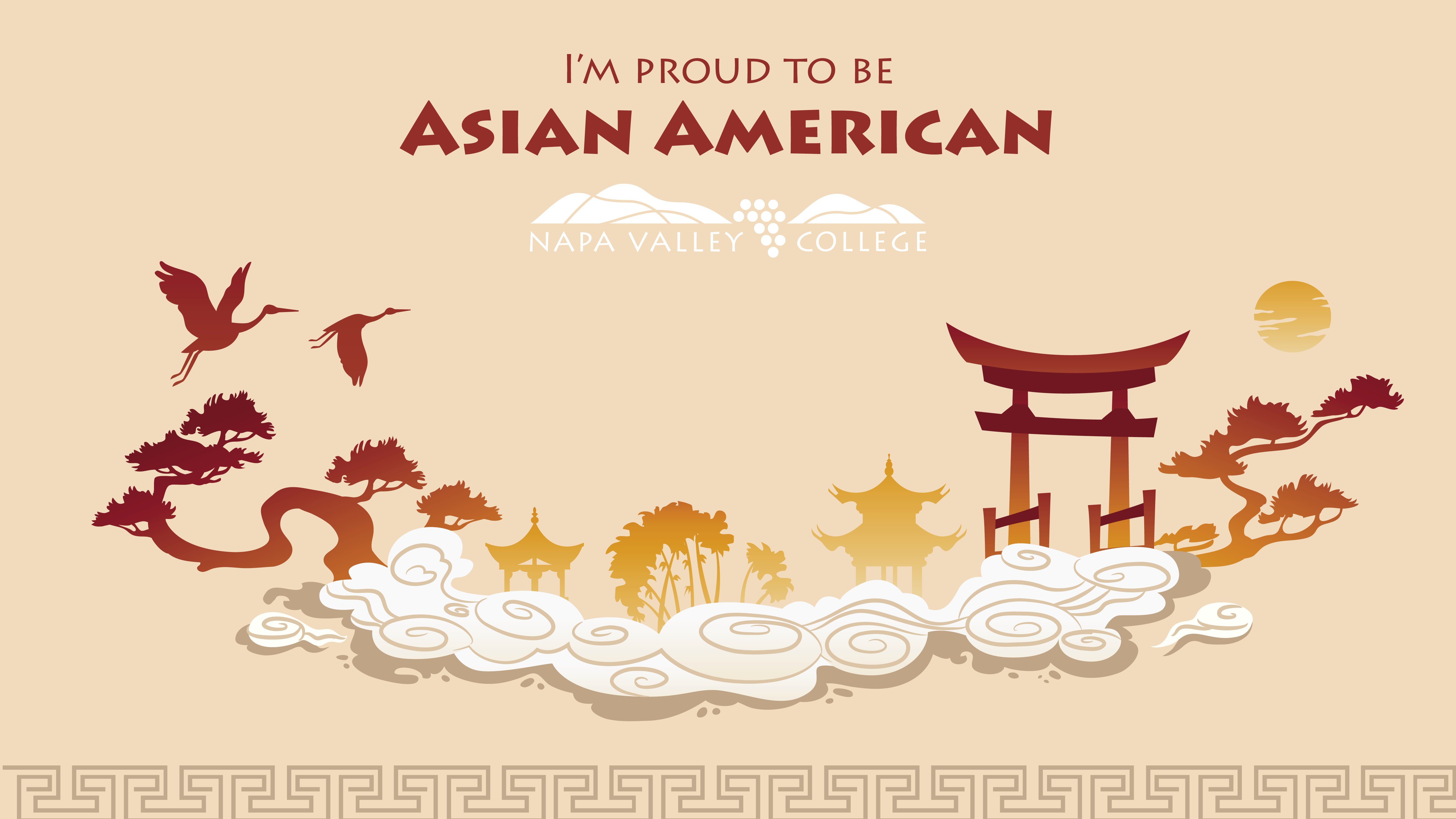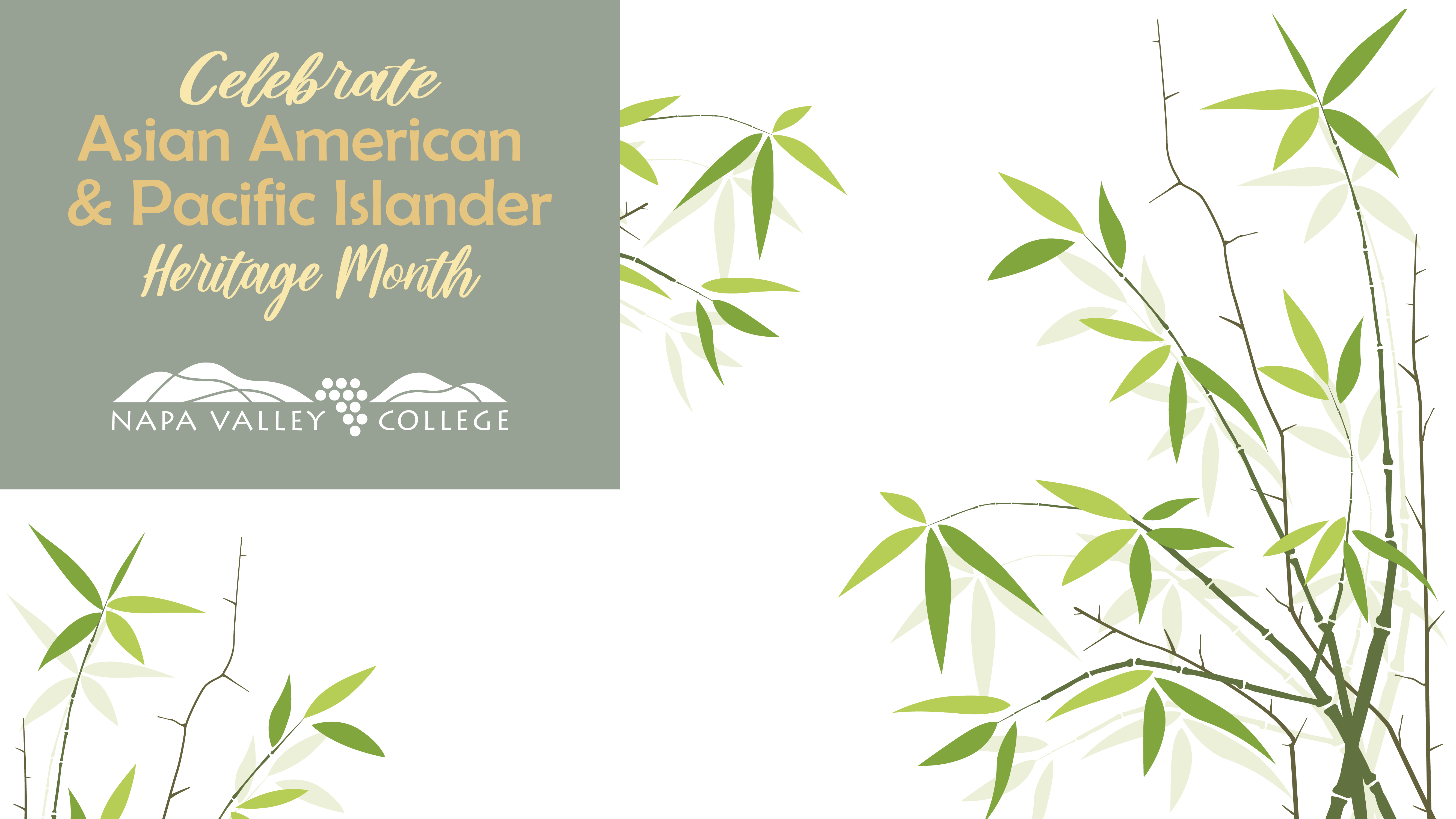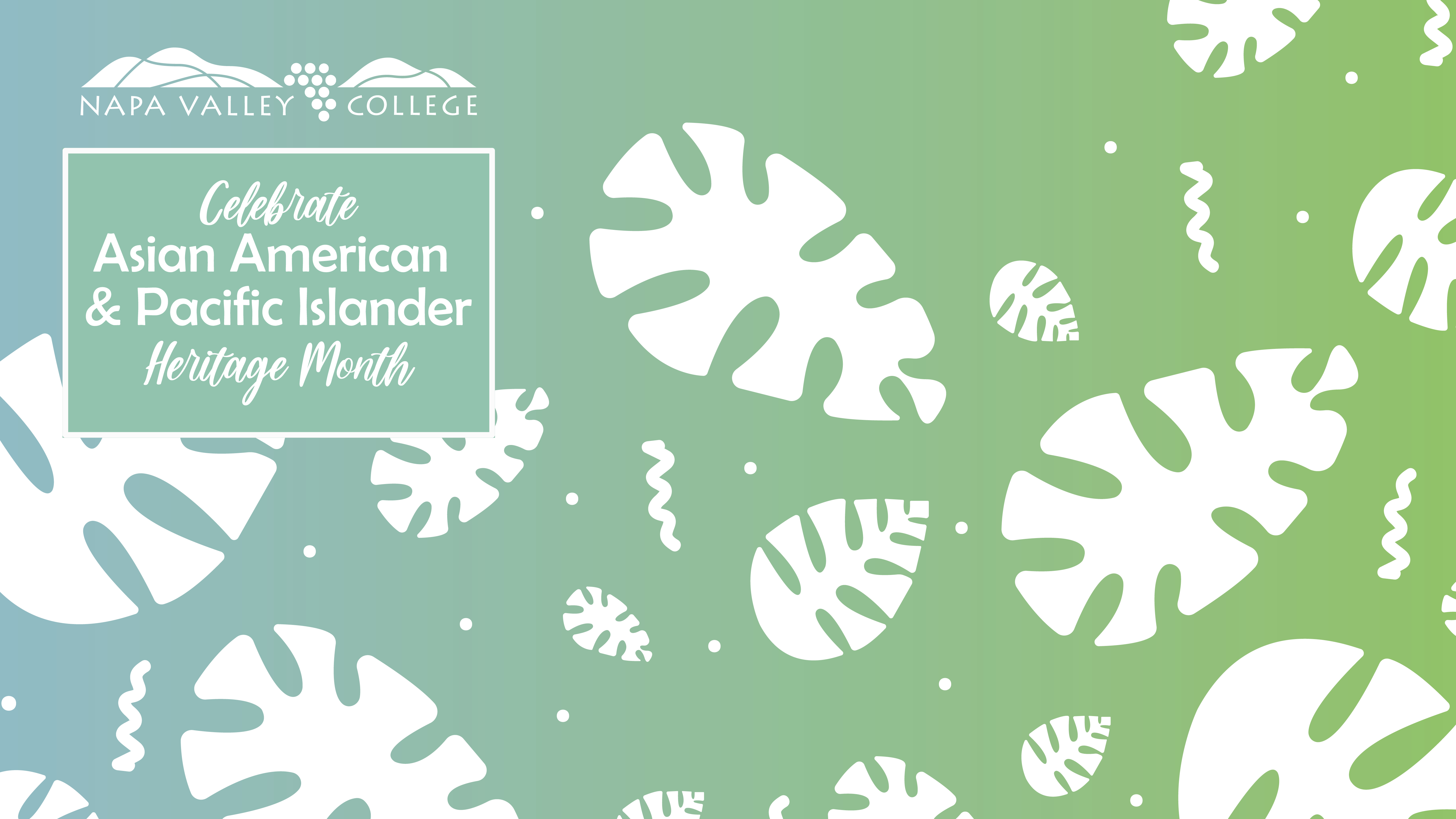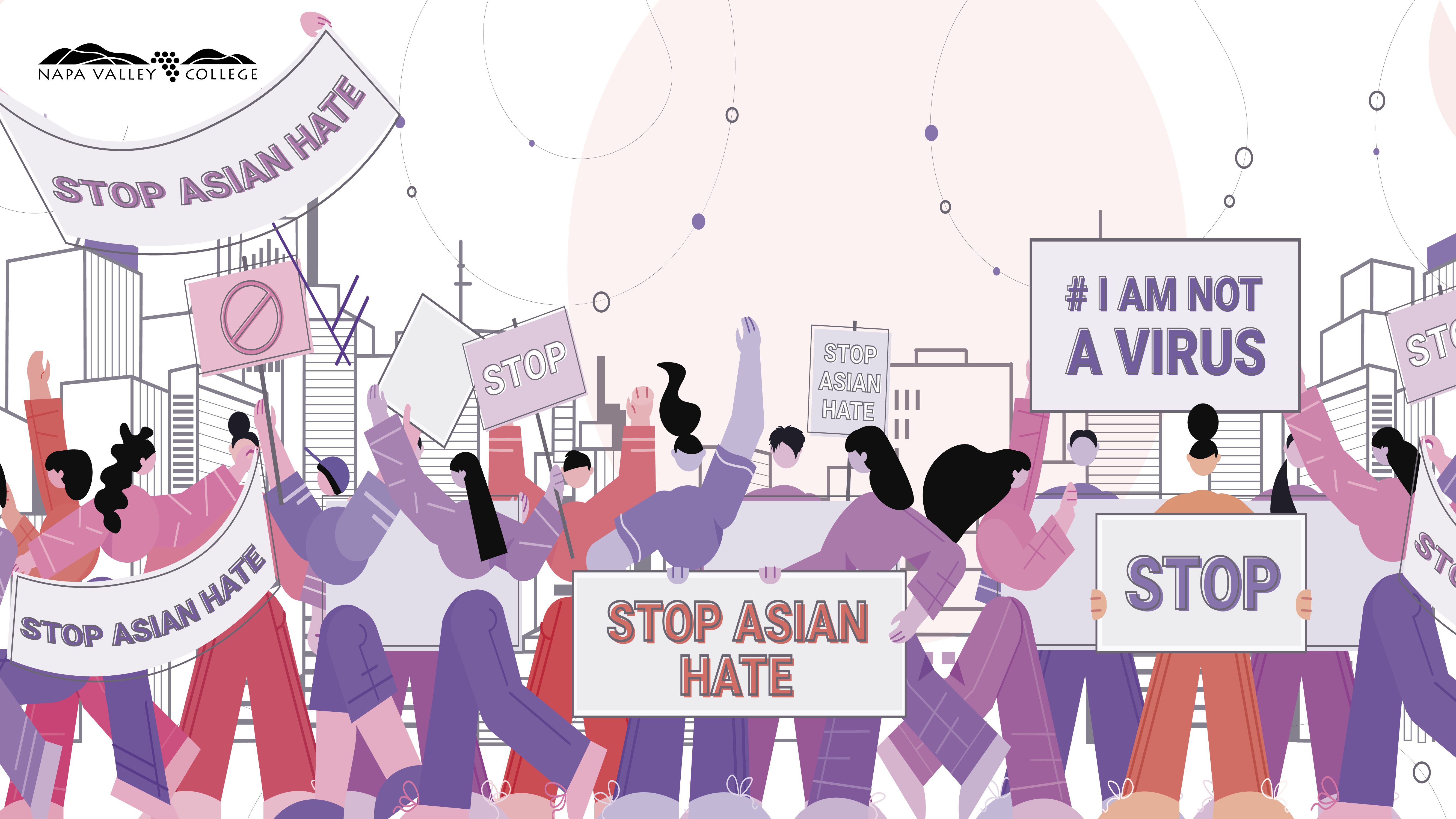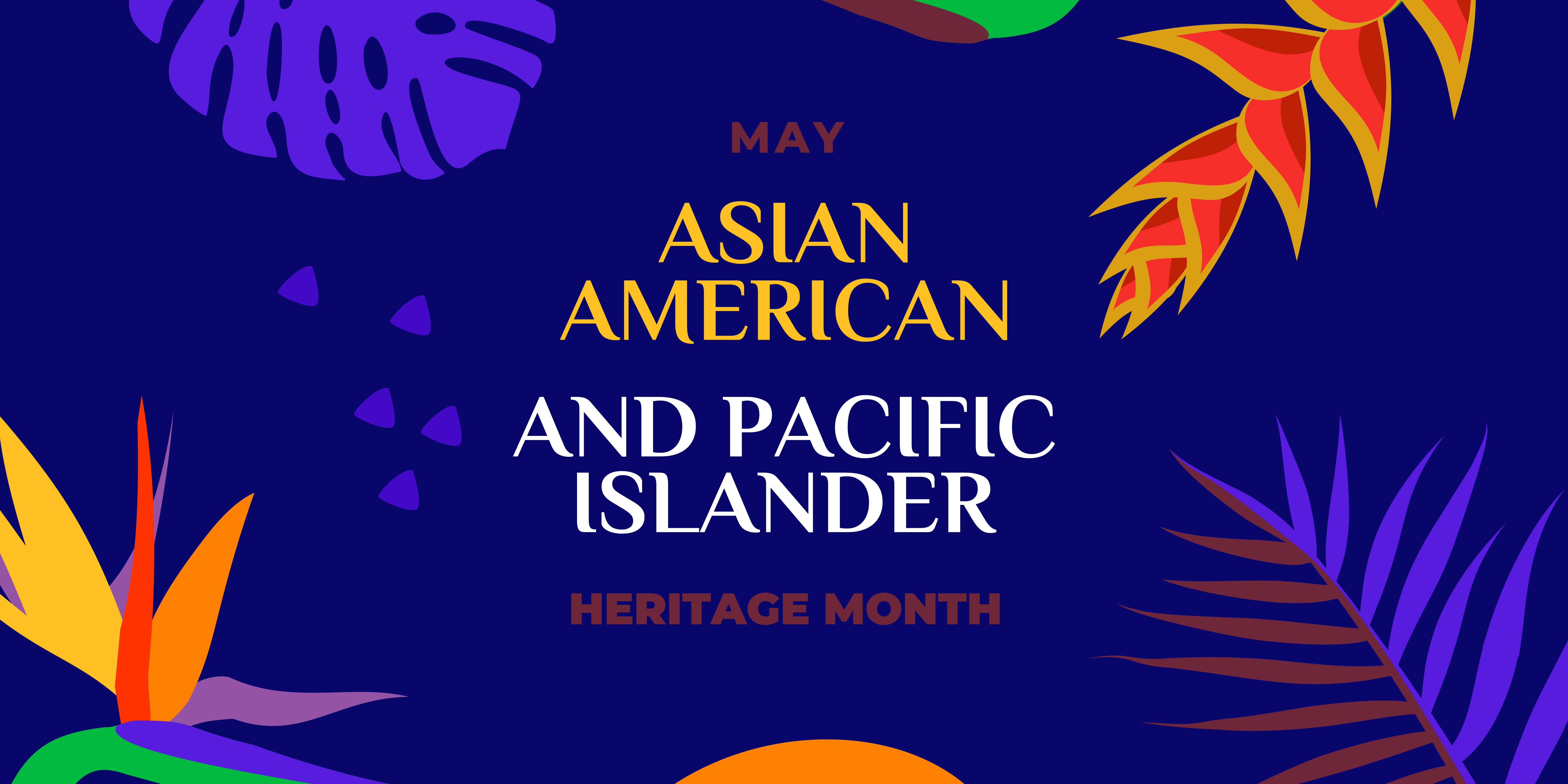Zoom backgrounds to download and use as one small step to celebrating AAPI Heritage Month and showing support for the AAPI community.
Dear Colleagues,
This May, as we celebrate Asian American and Pacific Islander Heritage Month, it is important to note the progress made in addressing the various forms of discrimination that impact the AAPI community. One of these is caste discrimination. Following is an interview by Suhauna Hussein with Dalit-rights activist Thenmozhi Soundararajan published in the Los Angeles Times on February 14, 2023. The interview provides information both on how people experience caste-discrimination, as well as strategies for Asians and allies to help all address caste-oppression.
By Suhauna Hussain
Good morning, and welcome to the Essential California newsletter. It’s Tuesday, Feb. 14. I’m Suhauna Hussain, a reporter on the L.A. Times business desk. I write about issues affecting workers. I have a heavy topic to cover today: Dalit caste discrimination. Formerly known as untouchables, Dalits fall at the bottom of a centuries-old South Asian social hierarchy. In the course of my reporting, I’ve been thinking about workplace discrimination and labor trafficking schemes in the U.S. that involve issues of caste. They can be uniquely fraught, damaging for those targeted and difficult to expose.
A prominent U.S. case involved a now-notorious Berkeley landlord who was the organizer and leader of an illegal sex, labor and human trafficking ring. The scheme was revealed only after a young Indian woman died, and local student journalists began to ask questions. More cases are coming to light. A major 2020 lawsuit against Cisco Systems, for example, alleged caste-based discrimination against a Dalit engineer by two dominant-caste managers. A Seattle city councilmember announced a proposal last month to add caste to the city’s anti-discrimination policy. I wanted to explore this issue more, so I spoke with Thenmozhi Soundararajan, a Dalit rights activists and the executive director of Equality Labs, a South Asian civil rights organization, about her book, published in November.Soundararajan has spent years fighting caste-based discrimination. Her book comes as violence toward Muslims and low-caste people in India is on the rise, emboldened by the leadership of Narendra Modi, who became prime minister of India in 2014, and his right-wing Bharatiya Janata Party. The bigotry can replicate itself in the U.S. South Asian community, and affects the lives of over a quarter of a billion people worldwide. Attendees of an Indian Independence Day celebration in Anaheim in August charged at a small group of protesters carrying signs that read “Abolish caste” and “Protect India’s Muslim lives.” A similar celebration in New Jersey featured a bulldozer — a strong symbol, given that Indian officials have used bulldozers to demolish the homes of Muslim and Dalit activists — in its parade. In November, a truck with a digital billboard showing anti-Muslim messaging targeted four New Jersey mosques.
In “The Trauma of Caste,” Soundararajan explains the continuing violence of the caste system and her own experience of it growing up in California. And she seeks to chart a path forward, particularly for diasporic South Asians in the U.S. Before we dive in, I want to ask that if you or someone you know has experienced caste discrimination in California — big or small — please don’t hesitate to write to me at suhauna.hussain@latimes.com. Even if you’re not sure you want to air your experience publicly, I want to hear from you.[Questions and answers have been edited for length and clarity.]
How did you experience caste oppression growing up as Dalit?
There’s so much shame, because you’re told that you are spiritually defiling before God. And that’s a very profound edge to discrimination because it’s not just that you’re excluded from institutions and that you face violence, but your very divinity is questioned.
I speak out because I saw how much hiding who they were diminished my parents. I saw how much pain it really gave them. And I know that they had sacrificed a lot for me to be here and I wanted to live my life in a way that was authentic in a way that they couldn’t live theirs. If we Dalits stay in the closet, dominant caste-people can pretend that they’ve created a caste-less environment [in the U.S.] — which they haven’t.
It feels like right-wing Hindu nationalists in the U.S. have become bolder in some expressions of bigotry over the past year or so. What do you think is behind this shift?
We’re in a moment right now where many dominant-caste people are in networks of bigotry — filtered bubbles — that allow them to justify more and more extreme behavior. And that can range from outright usage of caste slurs, to gaslighting whether or not caste exists. I’ve had the police called on me. I’ve been shoved. I faced rape and death threats. When you talk to [Brahmin supremacists] you can see they’re not even operating from a place of fact, their nervous systems are so triggered to view equity as a survival-level threat. But there is nothing inherently threatening about asking for our equal rights towards the law. It’s not unlike the people who throw temper tantrums when we’re teaching the history of slavery.
Last year you were scheduled to give a talk to Google News employees for Dalit History Month. But that talk was canceled after some Google employees reportedly spread disinformation, calling you “Hindu-phobic” and “anti-Hindu” in emails. How do you grapple with that?
I was speaking about the issue of caste equity and there were bigots that shared that they were afraid for their lives if I were to speak about caste equity. Think about how absurd that is. Right? No one has ever died from a DEI talk being given, as far as I can tell. Their nervous systems went to that place of anxiety, because they are so unable to share space with a Dalit person. Think about how big that divide is in our community, that that’s where we’re at. So for me, speaking my truth about not only being caste-oppressed, but also creating an urgency for us to heal this division across our community is really the need of the hour.
In the book, you talked about taking a trauma-informed approach to tackling caste-oppression. What are some specific steps people can take?
There’s really specific steps for South Asians. And then there’s really specific steps for allies. I think for allies, we really want people to understand that this is a world that is really active. And there’s a reckoning going on, for the South Asian community’s relations to caste and religious oppression. The best way to be supportive is to learn about it. Be part of caste equity movements. Consider thinking about ways that you can be an ally in your own workspace, like pushing to add caste as a protected category, inviting relevant speakers to build awareness.
For South Asians, I think that we have a long journey of reckoning, as the threat of mass atrocity looms in our homeland. Every person that reads this book I hope has more tools to understand their own past lineage— what benefits or privileges and also what deprivation and trauma they may have endured.
For the caste-privileged, there’s a lot of work to be done to build resilience related to examining your background and challenging bigotry in interpersonal relationships. It can be unpleasant to find out, “oh, I was complicit with violence” or, “oh, I was actually part of a caste that exploited labor or land.” The discomfort is such a crucial place of learning.
For caste-oppressed people, there’s really this invitation to take time to acknowledge the grief and the pain, everything that has denied us or dehumanized us, and for us to use that and open up possibilities for care and healing.
At Napa Valley College, I encourage us all to be mindful of the heterogeneity of the ethnic category of "Asian" and to take time to learn about the history and experiences of the various groups that fall under the umbrella of Asian. Let us also celebrate the work of social justice leaders who are working to remove barriers to equitable and safe working and living conditions for the AAPI community.
Best wishes,
Dr. Patricia van Leeuwaarde Moonsammy
Senior Director, Diversity, Equity, and Inclusion
5/1/2022
Dear Colleagues,
This May, as we celebrate Asian American and Pacific Islander Heritage Month, consider the heterogeneity of the peoples and cultures that comprise this overarching category—Asian American and Pacific Islander.
An article in Vox magazine, “The Inadequacy of the term ‘Asian American’” by Li Zhou, discusses the rationale for the emergence of Asian American as a category that encompasses several different ethnic groups, as well as the reason that Pacific Islander was added to this overarching label. She explains that this umbrella category was established in 1968 as part of the radical politics of students at UC Berkeley (Emma Gee and Yuji Ichioka) who argued for the increased political viability of people of Asian descent fighting for social justice. Modeled after Black Power activism, this was intended to organize disparate Asian groups into a formidable protest block. In the 1980s, this demographic category was expanded to include populations with roots in the Pacific Islands, due to similarities in the experience of colonialism, due to increasing populations of people of Asian descent who populated the Pacific Islands, and to increase the political power of Pacific Islanders in their fight for social justice. Although we may collect data on AAPI students and employees as a single demographic unit, consider how diverse this group actually is, as noted in Zhou’s article.
“Asian Americans comprise roughly 50 ethnic groups, who speak upward of 100 languages including Indian Americans, Chinese Americans, Taiwanese Americans, Filipino Americans, Vietnamese Americans, Korean Americans, Japanese Americans, Pakistani Americans, Cambodian Americans, Hmong Americans, Thai Americans, Laotian Americans, Bangladeshi Americans, Burmese Americans, Nepalese Americans, Indonesian Americans, Sri Lankan Americans, Malaysian Americans, Bhutanese Americans, and Mongolian Americans — and that’s just some of the diversity that exists.”
“Pacific Islanders as a group include Native Hawaiian, Samoan, Tokelauan, Tahitian, Tongan, Guamanian, Chamorro, Mariana Islander, Saipanese, Palauan, Yapese, Chuukese, Pohnpeian, Kosraean, Marshallese, I-Kiribati, Fijian, Papua New Guinean, Solomon Islander, and Ni-Vanuatu people.”
While there were initial rationales for grouping together people with very different histories, cultures, experiences, and social locations, there are also significant challenges. Particular ethnic groups are marginalized in comparison to other ethnic groups, this umbrella category homogenizes those who fall under this category, the unique challenges of particular groups are lost in analyses that are conducted at the macro level of the AAPI category, the larger group is stereotyped and pitted against other ethno-racial groups, even though particular groups under the AAPI category may have more in common with a different ethnic group not included in the AAPI umbrella that may be advocating for sovereignty or fighting colorism. Zhou’s article is very illuminating and you can read the full text.
People of Asian American and Pacific Islander ancestry have made significant contributions to our society, in the past and in the present, and the following link takes you a list of ten influential activists.
One of the people identified on this list is the Hawaiian scholar and activist, Dr. Haunani-Kay Trask, who passed away last year. Dr. Trask was born into a family of Hawaiian activists and from a very young age, was encouraged to critically examine society from a legal and political lens. She was a leader in the Hawaiian movement for sovereignty and established the Center for Hawaiian Studies at the University of Hawaii. Below is a link to an excerpt of her 1992 presentation on a panel addressing Racism and 1st Amendment Rights. In this excerpt, Dr. Trask begins by rooting the lineage and origins of the Hawaiian people in the Hawaiian belief system and then presents the early history of American imperialism in Hawaii from a native point of view.
Similar to Dr. Trask’s reorienting of history from a native perspective and centering the worldview and experience of the Hawaiian people, at Napa Valley College, your colleagues have organized several events and lectures that present knowledge from the perspective of the ethnic groups that we honor this month.
Regards,
Dr. Patricia van Leeuwaarde Moonsammy
Senior Director, Diversity, Equity, and Inclusion
5/1/2023
Dear Colleagues,
This May, as we celebrate Asian American and Pacific Islander Heritage Month, it is important to note the progress made in addressing the various forms of discrimination that impact the AAPI community. One of these is caste discrimination. Following is an interview by Suhauna Hussein with Dalit-rights activist Thenmozhi Soundararajan published in the Los Angeles Times on February 14, 2023. The interview provides information both on how people experience caste-discrimination, as well as strategies for Asians and allies to help all address caste-oppression.
By Suhauna Hussain
Good morning, and welcome to the Essential California newsletter. It’s Tuesday, Feb. 14. I’m Suhauna Hussain, a reporter on the L.A. Times business desk. I write about issues affecting workers. I have a heavy topic to cover today: Dalit caste discrimination. Formerly known as untouchables, Dalits fall at the bottom of a centuries-old South Asian social hierarchy. In the course of my reporting, I’ve been thinking about workplace discrimination and labor trafficking schemes in the U.S. that involve issues of caste. They can be uniquely fraught, damaging for those targeted and difficult to expose.
A prominent U.S. case involved a now-notorious Berkeley landlord who was the organizer and leader of an illegal sex, labor and human trafficking ring. The scheme was revealed only after a young Indian woman died, and local student journalists began to ask questions. More cases are coming to light. A major 2020 lawsuit against Cisco Systems, for example, alleged caste-based discrimination against a Dalit engineer by two dominant-caste managers. A Seattle city councilmember announced a proposal last month to add caste to the city’s anti-discrimination policy. I wanted to explore this issue more, so I spoke with Thenmozhi Soundararajan, a Dalit rights activists and the executive director of Equality Labs, a South Asian civil rights organization, about her book, published in November.Soundararajan has spent years fighting caste-based discrimination. Her book comes as violence toward Muslims and low-caste people in India is on the rise, emboldened by the leadership of Narendra Modi, who became prime minister of India in 2014, and his right-wing Bharatiya Janata Party. The bigotry can replicate itself in the U.S. South Asian community, and affects the lives of over a quarter of a billion people worldwide. Attendees of an Indian Independence Day celebration in Anaheim in August charged at a small group of protesters carrying signs that read “Abolish caste” and “Protect India’s Muslim lives.” A similar celebration in New Jersey featured a bulldozer — a strong symbol, given that Indian officials have used bulldozers to demolish the homes of Muslim and Dalit activists — in its parade. In November, a truck with a digital billboard showing anti-Muslim messaging targeted four New Jersey mosques.
In “The Trauma of Caste,” Soundararajan explains the continuing violence of the caste system and her own experience of it growing up in California. And she seeks to chart a path forward, particularly for diasporic South Asians in the U.S. Before we dive in, I want to ask that if you or someone you know has experienced caste discrimination in California — big or small — please don’t hesitate to write to me at suhauna.hussain@latimes.com. Even if you’re not sure you want to air your experience publicly, I want to hear from you.[Questions and answers have been edited for length and clarity.]
How did you experience caste oppression growing up as Dalit?
There’s so much shame, because you’re told that you are spiritually defiling before God. And that’s a very profound edge to discrimination because it’s not just that you’re excluded from institutions and that you face violence, but your very divinity is questioned.
I speak out because I saw how much hiding who they were diminished my parents. I saw how much pain it really gave them. And I know that they had sacrificed a lot for me to be here and I wanted to live my life in a way that was authentic in a way that they couldn’t live theirs. If we Dalits stay in the closet, dominant caste-people can pretend that they’ve created a caste-less environment [in the U.S.] — which they haven’t.
It feels like right-wing Hindu nationalists in the U.S. have become bolder in some expressions of bigotry over the past year or so. What do you think is behind this shift?
We’re in a moment right now where many dominant-caste people are in networks of bigotry — filtered bubbles — that allow them to justify more and more extreme behavior. And that can range from outright usage of caste slurs, to gaslighting whether or not caste exists. I’ve had the police called on me. I’ve been shoved. I faced rape and death threats. When you talk to [Brahmin supremacists] you can see they’re not even operating from a place of fact, their nervous systems are so triggered to view equity as a survival-level threat. But there is nothing inherently threatening about asking for our equal rights towards the law. It’s not unlike the people who throw temper tantrums when we’re teaching the history of slavery.
Last year you were scheduled to give a talk to Google News employees for Dalit History Month. But that talk was canceled after some Google employees reportedly spread disinformation, calling you “Hindu-phobic” and “anti-Hindu” in emails. How do you grapple with that?
I was speaking about the issue of caste equity and there were bigots that shared that they were afraid for their lives if I were to speak about caste equity. Think about how absurd that is. Right? No one has ever died from a DEI talk being given, as far as I can tell. Their nervous systems went to that place of anxiety, because they are so unable to share space with a Dalit person. Think about how big that divide is in our community, that that’s where we’re at. So for me, speaking my truth about not only being caste-oppressed, but also creating an urgency for us to heal this division across our community is really the need of the hour.
In the book, you talked about taking a trauma-informed approach to tackling caste-oppression. What are some specific steps people can take?
There’s really specific steps for South Asians. And then there’s really specific steps for allies. I think for allies, we really want people to understand that this is a world that is really active. And there’s a reckoning going on, for the South Asian community’s relations to caste and religious oppression. The best way to be supportive is to learn about it. Be part of caste equity movements. Consider thinking about ways that you can be an ally in your own workspace, like pushing to add caste as a protected category, inviting relevant speakers to build awareness.
For South Asians, I think that we have a long journey of reckoning, as the threat of mass atrocity looms in our homeland. Every person that reads this book I hope has more tools to understand their own past lineage— what benefits or privileges and also what deprivation and trauma they may have endured.
For the caste-privileged, there’s a lot of work to be done to build resilience related to examining your background and challenging bigotry in interpersonal relationships. It can be unpleasant to find out, “oh, I was complicit with violence” or, “oh, I was actually part of a caste that exploited labor or land.” The discomfort is such a crucial place of learning.
For caste-oppressed people, there’s really this invitation to take time to acknowledge the grief and the pain, everything that has denied us or dehumanized us, and for us to use that and open up possibilities for care and healing.
At Napa Valley College, I encourage us all to be mindful of the heterogeneity of the ethnic category of "Asian" and to take time to learn about the history and experiences of the various groups that fall under the umbrella of Asian. Let us also celebrate the work of social justice leaders who are working to remove barriers to equitable and safe working and living conditions for the AAPI community.
Best wishes,
Dr. Patricia van Leeuwaarde Moonsammy
Senior Director, Diversity, Equity, and Inclusion
5/1/2022
Dear Colleagues,
This May, as we celebrate Asian American and Pacific Islander Heritage Month, consider the heterogeneity of the peoples and cultures that comprise this overarching category—Asian American and Pacific Islander.
An article in Vox magazine, “The Inadequacy of the term ‘Asian American’” by Li Zhou, discusses the rationale for the emergence of Asian American as a category that encompasses several different ethnic groups, as well as the reason that Pacific Islander was added to this overarching label. She explains that this umbrella category was established in 1968 as part of the radical politics of students at UC Berkeley (Emma Gee and Yuji Ichioka) who argued for the increased political viability of people of Asian descent fighting for social justice. Modeled after Black Power activism, this was intended to organize disparate Asian groups into a formidable protest block. In the 1980s, this demographic category was expanded to include populations with roots in the Pacific Islands, due to similarities in the experience of colonialism, due to increasing populations of people of Asian descent who populated the Pacific Islands, and to increase the political power of Pacific Islanders in their fight for social justice. Although we may collect data on AAPI students and employees as a single demographic unit, consider how diverse this group actually is, as noted in Zhou’s article.
“Asian Americans comprise roughly 50 ethnic groups, who speak upward of 100 languages including Indian Americans, Chinese Americans, Taiwanese Americans, Filipino Americans, Vietnamese Americans, Korean Americans, Japanese Americans, Pakistani Americans, Cambodian Americans, Hmong Americans, Thai Americans, Laotian Americans, Bangladeshi Americans, Burmese Americans, Nepalese Americans, Indonesian Americans, Sri Lankan Americans, Malaysian Americans, Bhutanese Americans, and Mongolian Americans — and that’s just some of the diversity that exists.”
“Pacific Islanders as a group include Native Hawaiian, Samoan, Tokelauan, Tahitian, Tongan, Guamanian, Chamorro, Mariana Islander, Saipanese, Palauan, Yapese, Chuukese, Pohnpeian, Kosraean, Marshallese, I-Kiribati, Fijian, Papua New Guinean, Solomon Islander, and Ni-Vanuatu people.”
While there were initial rationales for grouping together people with very different histories, cultures, experiences, and social locations, there are also significant challenges. Particular ethnic groups are marginalized in comparison to other ethnic groups, this umbrella category homogenizes those who fall under this category, the unique challenges of particular groups are lost in analyses that are conducted at the macro level of the AAPI category, the larger group is stereotyped and pitted against other ethno-racial groups, even though particular groups under the AAPI category may have more in common with a different ethnic group not included in the AAPI umbrella that may be advocating for sovereignty or fighting colorism. Zhou’s article is very illuminating and you can read the full text.
People of Asian American and Pacific Islander ancestry have made significant contributions to our society, in the past and in the present, and the following link takes you a list of ten influential activists.
One of the people identified on this list is the Hawaiian scholar and activist, Dr. Haunani-Kay Trask, who passed away last year. Dr. Trask was born into a family of Hawaiian activists and from a very young age, was encouraged to critically examine society from a legal and political lens. She was a leader in the Hawaiian movement for sovereignty and established the Center for Hawaiian Studies at the University of Hawaii. Below is a link to an excerpt of her 1992 presentation on a panel addressing Racism and 1st Amendment Rights. In this excerpt, Dr. Trask begins by rooting the lineage and origins of the Hawaiian people in the Hawaiian belief system and then presents the early history of American imperialism in Hawaii from a native point of view.
Similar to Dr. Trask’s reorienting of history from a native perspective and centering the worldview and experience of the Hawaiian people, at Napa Valley College, your colleagues have organized several events and lectures that present knowledge from the perspective of the ethnic groups that we honor this month.
Regards,
Dr. Patricia van Leeuwaarde Moonsammy
Senior Director, Diversity, Equity, and Inclusion

